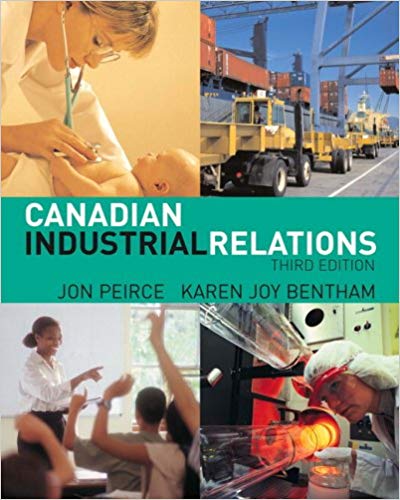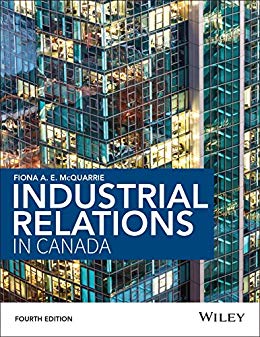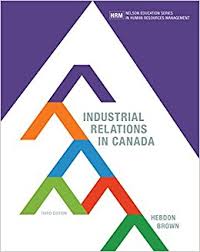Description
Test Bank For Industrial Relations in Canada 3rd Edition
|
1. According to the Organization for Economic Co-operation and Development, Canada is a. True b. False ANSWER: True |
|
2. Globalization has resulted in greater mobility of capital and decreases in the flow of goods. a. True b. False ANSWER: False |
|
3. An elastic supply curve for labour means that a small increase in wages will significantly increase labour supply. a. True b. False ANSWER: True |
|
4. An industry is said to be labour intensive if labour costs are a high proportion of total costs. a. True b. False ANSWER: True |
|
5. Unions will have more bargaining power when there is little competition in the firm’s product market. a. True b. False ANSWER: True |
|
6. A monopsony occurs when an organization is the sole market buyer of a good, service, or labour. a. True b. False ANSWER: True |
|
7. A key economic assumption is that labour is perfectly mobile. a. True b. False ANSWER: True |
|
8. In theory and in practice, labour markets are always competitive. a. True b. False ANSWER: False |
|
9. Monopsony exists when a firm is a wage setter but not a wage taker. a. True b. False ANSWER: True |
|
10. According to the Gallup Organization, there is little evidence that demand for unionization in North America is declining. a. True b. False ANSWER: True |
|
11. An argument in favour of restructuring policies is that they benefit workers who lack the necessary skills to compete in the new economy. a. True b. False ANSWER: False |
|
12. In 2013, The Conference Board of Canada concluded that more than one in seven Canadian children live in poverty. a. True b. False ANSWER: True |
|
13. Work organization, labour force composition, and individualization of human resources are examples of some of the profound changes that have occurred over the last 30 years. a. True b. False ANSWER: True |
|
14. Temporary and casual work falls under the category of contingent work. a. True b. False ANSWER: True |
|
15. Unions have had less success organizing contingent workers. a. True b. False ANSWER: True |
|
16. In contrast to its American counterpart, the Canadian labour movement has managed to organize new members and avoid the steep decline in union density found in the United States. a. True b. False ANSWER: True |
|
17. The Canadian parliamentary system and constitutional fragmentation mean that labour has been able to use its political association with the NDP, and in Quebec with the PQ, to win significant legislative gains. a. True b. False ANSWER: True |
|
18. In today’s world, what influences industrial relations? a. declining labour intensity b. macroeconomic policy regarding liberalization of markets c. rising regional unemployment d. very elastic labour supply ANSWER: b |
|
19. What does “elasticity of supply” mean? a. Labour responds to a decreased demand by raising the wage rate. b. Wage changes are flexible. c. Labour supply is increased due to a small change in the wage rate. d. A steep demand curve results in large wage increases. ANSWER: c |
|
20. In the context of elasticity of demand, what does “steep demand” mean? a. A large increase in the quantity demanded will cause a small increase in wages. b. A small increase in the quantity demanded will cause a large increase in wages. c. A small increase in the quantity demanded will cause a small increase in wages. d. A large increase in the quantity demanded will cause a large increase in wages. ANSWER: b |
|
21. The shape of the demand curve is important because it influences a union’s ability to raise wages without significantly affecting employment levels. What is this effect called? a. wage-employment trade-off b. wage elasticity c. substitution effect d. labour intensity ANSWER: a |





Be the first to review “Test Bank For Industrial Relations in Canada 3rd Edition”